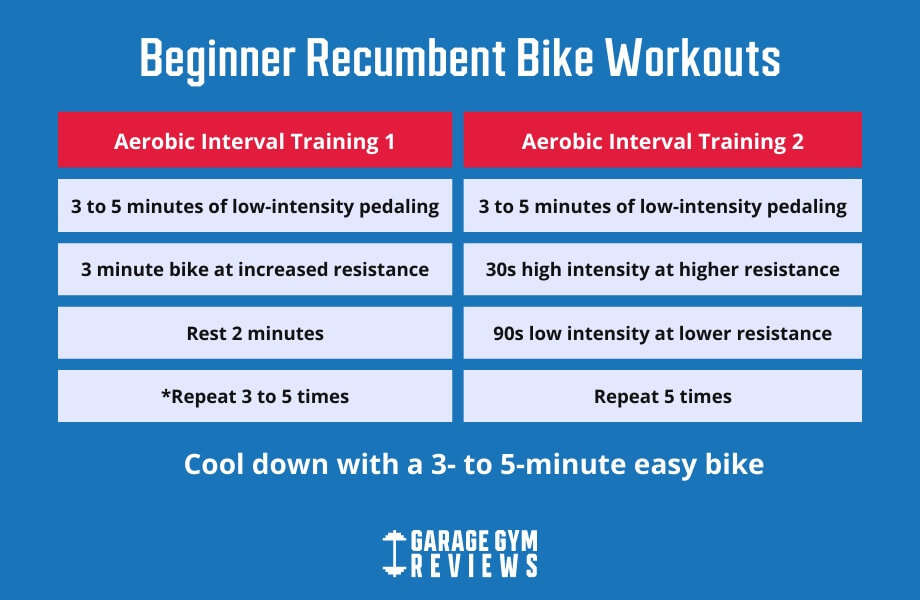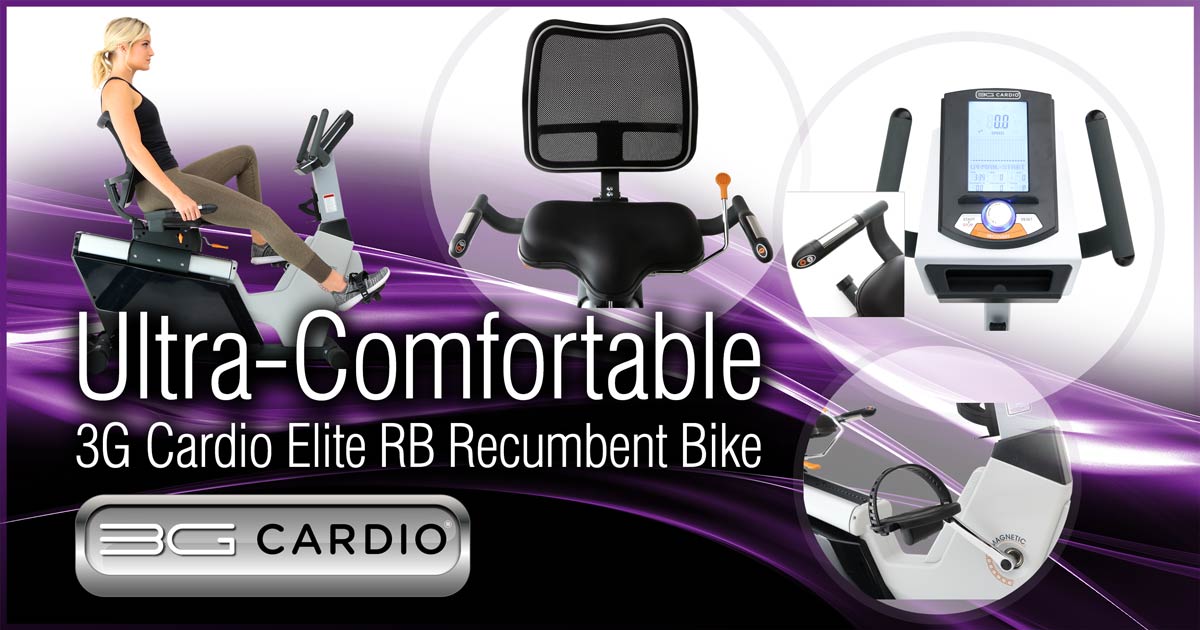Getting a good workout doesn’t have to be hard on your body — and that’s where a recumbent bike really shines. Offering a low-impact way to exercise, it’s perfect for those who want to stay active without putting too much strain on their joints. In today’s busy world, carving out time for fitness can feel like a challenge, but recumbent bikes make it easier by bringing a comfortable, effective workout right into your home.
These bikes are designed to support your back while still giving your muscles a solid workout. Whether you’re just starting out or you’re a seasoned athlete, a recumbent bike can easily fit into your fitness routine. You’ll be able to burn calories, boost your cardiovascular health, and tone your muscles — all while sitting in a relaxed, supported position.
Want to get the most out of your rides? In this guide, we’ll walk you through practical tips and techniques to help you maximize your workouts and hit your fitness goals faster. Let’s dive in!
Choosing The Right Recumbent Bike
Getting a good workout starts with choosing the right equipment. A recumbent bike can be a great choice for many. It’s comfortable and offers excellent support. But not all recumbent bikes are the same. Different features cater to various needs.
Types Of Recumbent Bikes
Recumbent bikes come in several types. The most common is the stationary recumbent bike. It’s designed for indoor use. Some models offer adjustable seats. Others have built-in workout programs. Another type is the semi-recumbent bike. It’s a blend of upright and recumbent styles. It provides a more intense workout.
Features To Consider
Consider the seat when choosing a bike. A comfortable seat makes long workouts easier. Check if the seat is adjustable. It should support your back well. Look at the bike’s resistance levels. More levels mean more workout variety. A good display screen is helpful too. It shows speed, distance, and calories burned. Pedal design matters as well. Non-slip pedals offer better safety. Lastly, consider the bike’s weight capacity. Ensure it suits your needs.
Setting Up Your Recumbent Bike
Setting up your recumbent bike correctly is crucial for getting the most out of your workout. A properly adjusted bike ensures comfort and efficiency, helping you avoid injuries and maximize calorie burn. Imagine starting a workout only to realize your seat is too low or your feet aren’t positioned right—frustrating, right? By paying attention to details like seat position and foot placement, you set yourself up for a more productive and enjoyable exercise session.
Adjusting Seat Position
Adjusting your seat position is the first step to a good workout. Your seat should be at a height that allows your knees to be slightly bent when the pedal is at its lowest point. This helps in avoiding strain on your knees and ensures a smooth cycling motion.
Have you ever noticed how uncomfortable it is to cycle with your seat too far back or too close? It’s not just uncomfortable—it can also hinder your performance. Aim for a slight bend in the knee, about 25-30 degrees, to find that sweet spot of comfort and efficiency.
Proper Foot Placement
Proper foot placement is another key aspect to focus on. Your feet should be centered on the pedals, with the balls of your feet providing the most pressure. This position ensures you are engaging the right muscles while pedaling and helps in preventing foot cramps.
Think about the last time you felt your feet slipping off the pedals mid-workout. Annoying, isn’t it? Secure your feet well to maintain stability and power during your cycling session. Consider using pedal straps if you find it difficult to keep your feet in place.
By setting up your recumbent bike correctly, you pave the way for a workout that feels less like a chore and more like a rewarding challenge. Are you ready to step up your recumbent bike game and see the difference?
Creating An Effective Workout Plan
Achieve a good workout on a recumbent bike by setting clear goals and maintaining proper posture. Start with a warm-up, adjust resistance levels for intensity, and track progress for motivation.
Creating an effective workout plan on a recumbent bike can boost fitness. It keeps your routine exciting and targets your fitness goals efficiently. Whether you’re a beginner or have some experience, a well-structured plan is crucial. This plan should suit your current fitness level and desired results. Let’s explore how to create this plan with focus and purpose.
Setting Realistic Goals
Start by setting clear and achievable goals. Know what you want to achieve with your workouts. Is it weight loss, improved endurance, or muscle toning? Set goals that match your current fitness level. Avoid setting goals that are too ambitious initially. This helps in maintaining motivation and progress.
Balancing Cardio And Strength
A good workout plan balances cardio and strength training. Cardio on a recumbent bike is great for burning calories. It also improves heart health. Aim for a mix of steady-state and interval training. For strength, focus on resistance settings. Increase the bike’s resistance gradually. This helps build muscle and improves endurance. Keep alternating between cardio and resistance to maximize benefits.

Warm-up Techniques
Getting a good workout on a recumbent bike starts with effective warm-up techniques. Warming up is crucial to prepare your body for the physical activity ahead. It helps prevent injuries and enhances your workout performance. But how exactly should you warm up on a recumbent bike to get the best results?
Importance Of Warming Up
Warming up is not just a routine—it’s a necessity. It increases your heart rate gradually, improving circulation and loosening your muscles. This makes them more flexible and ready for the workout. Have you ever started exercising and felt stiff or uncomfortable? A proper warm-up can help eliminate that feeling. Think of it as setting the stage for a great performance.
Your recumbent bike workout can be more effective when your body is well-prepared. Skipping the warm-up can lead to strains or unnecessary fatigue. You want to feel energized, not exhausted, right from the start. So, always prioritize warming up.
Effective Warm-up Exercises
Start with a slow pedal on your recumbent bike. Aim for 5 minutes at a leisurely pace. This helps your body adjust to the movement and gets your blood flowing. Gradually increase your speed as you feel more comfortable.
Incorporate dynamic stretches like leg swings or arm circles. These exercises help mobilize your joints and improve range of motion. You can do them right on the bike or standing beside it.
Consider adding a few minutes of light cycling with varied resistance. Alternate between low and medium resistance levels to prepare your muscles for the workout’s intensity. This variation keeps your warm-up interesting and effective.
What warm-up routine works best for you? Try different techniques to find what energizes you the most. Everyone’s body responds differently, so personalize your approach for optimal results.
Maximizing Workout Intensity
Boost workout intensity on a recumbent bike by adjusting resistance levels and incorporating interval training. Keep sessions varied and maintain proper posture for effective results.
Maximizing Workout Intensity Getting a solid workout on a recumbent bike is not just about pedaling away. It’s about pushing your limits and making every minute count. But how do you really maximize your workout intensity without burning out too quickly? ###
Using Resistance Levels
Adjusting the resistance levels on your recumbent bike is key to boosting workout intensity. Think of resistance as the challenge setting; the higher it is, the harder your muscles have to work. Start by setting a moderate resistance level and gradually increase it as your endurance builds. Try experimenting with different resistance levels during your workout. You might find that a slight increase pushes you to engage more muscles, making your session much more effective. Are you feeling comfortable at your current level? It might be time to push a bit harder. ###
Interval Training Strategies
Interval training on a recumbent bike can significantly elevate your fitness game. It involves alternating between high-intensity bursts and lower-intensity recovery periods. This method not only improves cardiovascular fitness but also burns more calories in less time. Start with short intervals of high resistance for about 30 seconds, followed by a minute of easier pedaling. As you get more comfortable, increase the high-intensity duration or decrease the recovery time. This keeps your body guessing and prevents your workout from becoming too predictable. Personal experience has shown that interval training can transform a monotonous ride into a dynamic challenge. It keeps your mind engaged, as you’re constantly focusing on the next change in pace. Have you tried timing your intervals with your favorite song? It adds a fun twist and keeps you motivated. Incorporating these strategies into your recumbent bike routine can make a significant difference. You’ll notice improvements not just in your fitness levels, but in how energized you feel after each session. So, are you ready to take your workout to the next level?

Maintaining Motivation
Staying motivated on a recumbent bike can boost your workout efficiency. Set achievable goals and track progress to maintain enthusiasm. Listening to music or podcasts helps keep the energy up during long sessions.
Maintaining motivation is crucial when using a recumbent bike for workouts. It’s easy to start with enthusiasm, but how do you keep that fire burning? Let’s dive into some practical strategies to keep you motivated and committed to your fitness journey.
Tracking Progress
Setting clear goals can be a game-changer. Begin by defining what success looks like for you. Is it a specific distance, calorie burn, or simply feeling more energetic? Use apps or a simple notebook to track your daily workouts. Seeing your progress visually can be incredibly rewarding. Celebrate small wins. Did you bike an extra mile this week? Treat yourself to something small, like your favorite smoothie.
Variety In Workouts
Monotony can be a motivation killer. Mix up your routines to keep things fresh and exciting. Try varying the intensity of your workouts. Some days go for a steady, moderate pace, while on others, challenge yourself with high-intensity intervals. Consider incorporating music or podcasts. Listening to an engaging story or upbeat playlist can make time fly by on the bike. Have you ever thought about setting themed workout days? It could be a day dedicated to music from your favorite decade or one where you explore virtual trails around the world. By keeping your workouts dynamic and tracking your success, you’ll find it easier to maintain motivation. What strategies have helped you stay motivated on your fitness journey?
Safety Tips For Recumbent Bike Workouts
Working out on a recumbent bike is a fantastic way to improve your fitness while minimizing stress on your joints. However, like any exercise, it’s crucial to prioritize safety to prevent injuries and make the most of your workout. Whether you’re a beginner or a seasoned pro, understanding how to protect yourself during your sessions can enhance your experience and results.
Avoiding Common Injuries
Injuries can quickly derail your fitness goals. One key to avoiding them is to maintain proper posture. Ensure your back is comfortably supported by the seat and that your legs are slightly bent when the pedal is furthest from you. This alignment reduces the strain on your knees and hips.
Another common pitfall is overdoing it with resistance. It’s tempting to crank up the difficulty, but this can lead to muscle strain. Gradually increase resistance as your strength builds. A friend of mine ignored this advice and ended up with a sore knee that sidelined him for weeks. Learn from his mistake and progress steadily.
Listening To Your Body
Your body is an excellent communicator. Pay attention to any discomfort or pain during your workout. It’s normal to feel some fatigue, but sharp pain is a red flag. Don’t push through it; instead, adjust your intensity or take a break.
Hydration is another vital aspect often overlooked. You might not feel as sweaty as during a run, but your body still loses fluids. Keep a water bottle within reach and sip regularly. This habit not only prevents dehydration but also keeps your energy levels up.
Remember, every workout should leave you feeling accomplished, not exhausted. Are you pushing yourself too hard, or are you respecting your limits? Asking these questions can be the difference between a fulfilling workout and a frustrating injury.
Post-workout Recovery
Completing a workout on a recumbent bike is just the beginning. Post-workout recovery plays a vital role in fitness progress. This phase helps your muscles heal and grow stronger. Effective recovery ensures you are ready for the next session. It reduces the risk of injuries and boosts overall performance.
Stretching Exercises
Stretching after a workout is essential. It improves flexibility and reduces muscle soreness. Focus on major muscle groups like legs and back. Hold each stretch for 15 to 30 seconds. Do not rush through this process. Slow and steady movements are key. Breathe deeply to enhance relaxation and effectiveness.
Hydration And Nutrition
Proper hydration is crucial after exercising. Drink water to replenish lost fluids. Consider a sports drink if you’ve sweated a lot. Nutrition is equally important for recovery. Eat a balanced meal with protein and carbs. Protein helps repair muscle tissues. Carbs restore energy levels. A small snack post-workout can also be beneficial.

Frequently Asked Questions
Can You Get A Good Workout With A Recumbent Bike?
Yes, a recumbent bike offers a good workout. It enhances cardiovascular health and strengthens leg muscles. The seated position reduces joint stress, making it suitable for all fitness levels. Consistent use can improve endurance and promote weight loss. Adjust resistance levels for increased workout intensity.
How Long Should I Exercise On A Recumbent Bike?
Exercise on a recumbent bike for 30 to 60 minutes per session. Aim for 3 to 5 days weekly. Adjust duration based on fitness goals and comfort levels. Gradually increase intensity for better results. Always consult a professional for personalized advice.
Can You Really Lose Weight On A Recumbent Bike?
Yes, you can lose weight on a recumbent bike. Consistent workouts burn calories and improve cardiovascular health. Combine biking with a balanced diet for effective weight loss. Adjust resistance levels to increase intensity and maximize results. Regular exercise on a recumbent bike supports sustainable weight management.
What Is One Disadvantage To Riding A Recumbent Bike?
Recumbent bikes can be less visible to motorists due to their lower profile. This may increase accident risk.
Conclusion
Recumbent bikes offer a great workout for all fitness levels. They are easy on the joints, making them ideal for everyone. Start slow and gradually increase your intensity. Remember to adjust the seat for comfort and proper posture. Mix up your routine with intervals for better results.
Consistency is key. Regular workouts will improve your fitness over time. Stay hydrated and listen to your body’s signals. Enjoy the ride and keep pushing towards your goals. With these tips, your recumbent bike workouts will be effective and enjoyable.
Happy cycling!
Related Post:
10 Best Exercise Bike With Screen: Top Picks for Effective Home Workouts



